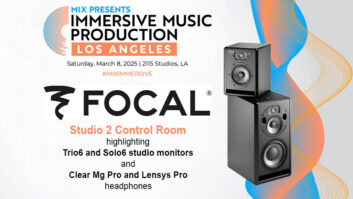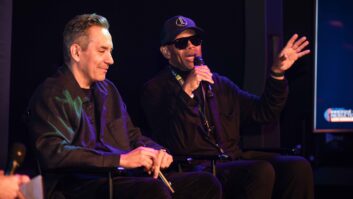
In late 2018, Grammy-winning guitarist Lee Ritenour and his wife lost their Malibu home and recording studio to California’s devastating Woolsey Fire. Temporarily housed in Marina Del Rey while everything is being rebuilt, Ritenour recently released Dreamcatcher, a solo guitar record on which he personally tackled all the writing, production, engineering and playing — a career first.
You’ve likely heard Ritenour, whether you realize it or not. He’s played on thousands of sessions, beginning with the Mamas and the Papas at age 16 (he turned 69 on January 11). He’s on Pink Floyd’s The Wall and George Benson’s Give Me The Night. He’s played with Barbra Streisand, Aretha Franklin and many, many others. Since 1976, he’s produced dozens of solo albums, plus a few with ’90s jazz supergroup Fourplay, garnering 16 Grammy nominations in the process.
As Ritenour celebrates six decades of playing guitar, he talked to PSN about the challenges of completing an album in temporary quarters, and during a pandemic.
On Fleeing the Fire:
When the fire was coming through the valley to Kanan Dume Road, I had that old timer’s thing: “It’ll never cross the highway.” We were totally wrong. I said, “We’ll just take a few things.” We packed an overnight bag and I put seven guitars and my Mac Pro in the car. I left almost 100 guitars there, 40 amps and a Trident Series 80 board I’d had since 1984. That was the end of Starlight Studio.
Because I thought I was going to be back the next day, I didn’t take all the A guitars—although I like to think they’re all my A guitars. I took the ’49 Gibson L-5 jazz guitar that my dad got me when I was 13 and I first became a fan of Wes Montgomery. My dad used to take me to the Lighthouse Cafe in Hermosa Beach to hear Wes. I grabbed my Ramirez classical guitar and two Les Pauls that Gibson made for me. I grabbed an inexpensive Yamaha NCX3; it plays very easily and was the guitar I was composing on the most.
On Getting Back to Work:
I didn’t want to get bogged down in the technical thing; there was so much other stuff going on in my life at that point. Art Kelm, my longtime buddy and tech, helped set up a temporary room. I had Logic Pro and the Apogee Symphony I/O, which I’d also had in Malibu. I bought a couple of Schoeps mics for the acoustic guitar.
The Apogee people and the Genelec people were fantastic. I ended up purchasing stuff from them, but they were the first up to bat. Mesa/Boogie, Fender and Ladner, a custom maker out of Mississippi, helped out with amps. Yamaha, Gibson, Taylor and Exotic helped out with guitars.
My engineer of 40 years, Don Murray, couldn’t come over to help get sounds. He tweaked the mixes and balanced things at his house. I used seven different guitars and different approaches. Some songs were solo, some layered, some had a little more production. By the time I got to mastering in May or June, Eric Boulanger at The Bakery said, “We’ll have to do it remotely because nobody can come onto the Sony lot.” A couple days later, he called back and said, “You have a fan in high places here at Sony; they’re going to let you on.”
On Music and Experience:
When I told some people that I was going to do a solo record, they thought I was going to pick out one guitar and do one sound and a bunch of songs. But I found myself producing it like I would any Lee Ritenour record: composition, arrangement, style, different tempos, different sounds. It was basically up to me. On some of the acoustic guitar tracks, I had more string noise than I would normally let go, but the imperfections weren’t as important as the music and the overall tone. I had a great studio career, then did 45 of my own projects, so my experience is tremendous at this point. It was put to the test, but in the end, it still comes down to music.
Lee Ritenour • www.leeritenour.com







